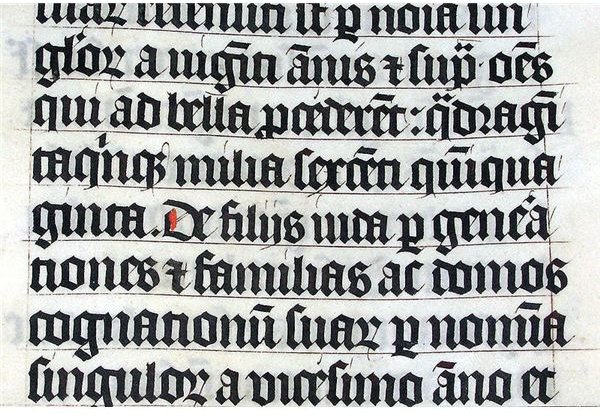Classical Latin: An Introduction to the History of the Latin Language
The Classical Latin period is that which spans most of the first century B.C. through the second century A.D.. This time period saw the
assassination of Julius Caesar, the eruption of Mount Vesuvius, and the Great Fire of Rome. It is Classical Latin most often taught in schools today, with much translation exercises coming from the authors of the time.
Classical Latin can be further divided into two main ages. The Golden Age ran from approximately 75 B.C. to the first or second decade of the first century A.D.. Roman poetry in this period reached an all time high in both sophistication and beauty, with such authors as Lucretius writing De rerum natura (on the Nature of Things), which attempts to explain Epicurean philosophy to the Roman reader. Julius Caesar’s Commentaries on the Gallic Wars illustrate a militaristic style of Roman writing which is familiar to modern Latin students. These commentaries often form the basis for intermediate translation exercises in Latin pedagogy.
One of the most important authors of the Golden Age was Cicero (106-43 B.C.) who is as well known for his oratory skills as for his authorship. Cicero’s orations once ended the conspiracy of Catiline and revealed to the Romans the cold-hearted polices of Anthony. Cicero’s greatest writings praise the worth of friendship (De Amicitia) and old age (De Senectute) and also interpret Greek philosophy for the Romans of his time. Coupled with candid writings in his letters, much is revealed to us about both formal and anecdotal forms of Classical period Latin.
The Silver Age is generally considered inferior to the Golden Age, although this stigma has been challenged. Running from the early part of the first century to about the end of the second century, the Silver Age saw such authors as Seneca, writing about Stoic Philosophy, and the naturalist Pliny the Elder writing Naturalis Historia (Natural History). During the latter part of the Silver Age, some Roman writing became frightening tales of violence, witchcraft, and vices which continue to prove enigmatic to literary scholars. By the end of this age, writing returned to more peaceful themes under the leadership of the Roman emperors such as Trajan.
The Classical Latin period is marked by the familiar declensions and conjugations taught in Latin studies today. The indistinguishable forms of the first declension, for example, in which the inflected forms for the genitive and dative singular and the nominative plural are similar, mark this period in Latin history. In addition, the need for macrons so Latin students can distinguish second and third declension verbs often prove difficult for those interested in listening to and speaking the language.
Better than the inconsistencies of Old Latin, the Classical Latin period laid down a standard which is evident in the many surviving texts of some of the greatest writers in history. Although somewhat of an experimental time in Latin’s lineage, this period represents the pinnacle of the Roman literary contribution to the world.
This post is part of the series: A Brief History of the Latin Language
The Latin language has survived for over twenty-seven hundred years in one form or another. From a language spoken by the Romans who conquered most of the known Western world to a course offered in the classics curriculum of modern higher education, Latin undeniably endures.
- An Introduction to a Brief History of the Latin Language
- A Brief History of the Latin Language: Old Latin
- The Golden and Silver Ages of the Latin Language: The Classical Latin Period
- A Brief History of the Latin Language: Vulgar Latin
- A Brief History of the Latin Language: Medieval Latin
- A Brief History of the Latin Language: Renaissance Latin
- New Latin in a Brief History of the Latin Language
- A Brief History of the Latin Language: Modern Latin
